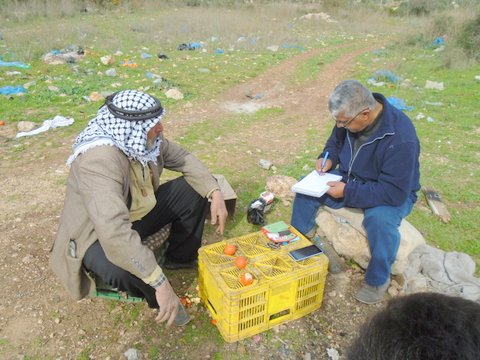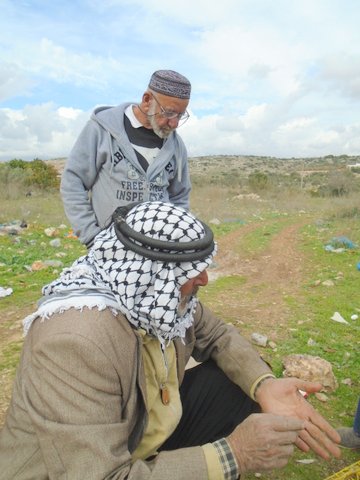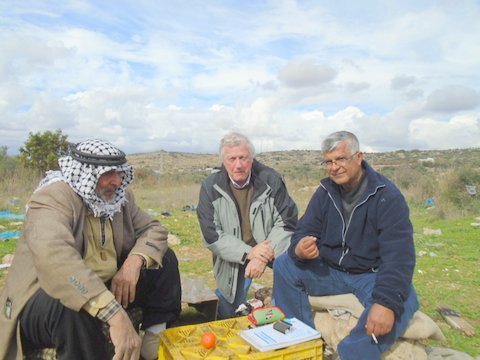Uri Avnery’s wisdom gives me hope.
I have felt for a long time that, only the establishment of a free and independent, self governing, State of Palestine will bring about an end to the Israel Palestine conflict. But the establishment of such a State would necessarily require 2 things: an end to the belligerent Occupation and the removal of the illegal Settlements on the West Bank, something I could not imagine possible – until today. Today I received Uri Avery’s weekly newsletter. Uri is an Israeli writer, veteran of the 1948 war, former parliamentarian, and founder of Gush Shalom, the Israeli Peace Movement. This man is truly a present day Prophet of Israel. I am so moved by his wisdom and his optimism I am re-posting this week’s newsletter in full. Apologies if you already get it direct from Uri
~~~~~~~~~~~~~~~~~~~~0o0~~~~~~~~~~~~~~~
Uri Avnery January 7, 2017
Yes, We Can
DURING WORLD WAR II, when German bombers terrorized Britain, a small group of gallant airmen faced them every day. Their life expectancy was numbered in days. Once, a genius at the propaganda ministry devised a poster: “Who is afraid of the German Luftwaffe?”
When it was posted at one of the Royal Air Force bases, an anonymous hand penned underneath: “Sign here”.
Within hours, all the airmen had signed.
These were the men about whom Winston Churchill said: “Never have so many owed so much to so few!”
If somebody today were to devise a poster asking “Who is afraid of the settlers?” I would be the first to sign.
I am afraid. Not for myself. For the State of Israel. For everything we have built during the last 120 years.
LATELY, MORE and more people in Israel and around the world have been saying that the “Two-State Solution” is dead.
Finito. Kaput. The settlers have finally killed it.
Peace is finished. There is nothing we can do about it. We can only sit in our comfortable armchair in front of the TV set, sigh deeply, sip our drink and say to ourselves: “The settlements are irreversible!”
When did I hear that for the first time?

Uri at Gush Shalom Demo.
Some 40 years – or was it 50 years – ago, the noted Israeli historian Meron Benvenisti used it for the first time. The settlements, he proclaimed, have resulted in an “irreversible” situation. No Two-State solution, which my friends and I were insisting on. Sorry, irreversible. At that time, there were less than a hundred thousand settlers in the West Bank, the Gaza Strip and even some in Sinai.
Now, this slogan can be heard everywhere. Irreversible. The sheer mass of the settlers has made the Two-state Solution a pipe-dream.
It is said that there are now some 450 thousand settlers in the West Bank, and an additional 150 thousand in occupied East Jerusalem.
They cannot be removed without a civil war, Jews against Jews.
So let’s stop talking about the Two-state Solution. Let’s think about something else. A One-State solution? An apartheid state? No solution at all? Eternal conflict?
I DO NOT believe that there is a human problem that has no solution.
I do not believe that despair is a good counselor, though it may be a comfortable one.
I do not believe that anything in life is “irreversible”. Except death.
If one is faced with a problem that seems irresolvable, one has to look at it, analyze it and consider the possible ways out.
It is said that General Bernard Montgomery, the British commander in North Africa, had a picture of his adversary, the legendary German general Erwin Rommel, on his desk at his headquarters. To his amazed visitors, he explained: “I want to ask myself at every moment: What is he thinking?”
If we try to imagine the settlers, we see before us a mass of 650 thousand fanatics, growing in number every day. Really frightening. But not frighteningly real. There does not exist one mass of settlers. There are several kinds of settler. If we want to devise a means to overcome this problem, we first have to take it apart.
Let’s look at the diverse groups, one by one.
FIRST THERE are the “quality of life settlers”. They go to the West Bank, find a spot surrounded by picturesque Arab villages and settle there on land that probably belongs to some Arab villager. They look out of their window at beautiful minarets and olive trees, hear the call to prayer, and are happy. They get the land for nothing or next to nothing.
Let’s call them Group 1.
Since they are not fanatics, it will not be too hard to resettle them in Israel proper. Find them a nice place, give them a lot of money, and they will move without too much trouble.
THEN THERE are the “border settlements”. There the settlers live in towns and villages very close to the old Green Line, the pre-1967 border that is still the legal border of the State of Israel. The bulk of the settlers live there.
There exists a tacit agreement between Israel and the Palestinians that these settlements will be included in the “swap of territories” envisaged by practically everybody who deals with the “Two-State Solution”.
The basis is a swap of 1 to 1, of equal value. For example, in return for the “settlement blocs”, Israel could cede territory alongside the Gaza Strip. The sons and daughters of the families within the Strip, the world’s most overcrowded area, would welcome the opportunity to build their homes there, near their families.
Let’s call this kind of settler “Group 2”.
To this group belong many of the ultra-orthodox settlers, who don’t really care about the locality. They just have very large families, following God’s commandment. They also need to live together in crowded communities, since many commandments of their creed demand joint institutions.
The ultra-orthodox (“haredim” in Hebrew, meaning those “trembling” before God) live in terribly overcrowded towns in Israel – West Jerusalem, Bnei-Brak etc. They need more land, and the government is happy to oblige – but beyond the Green Line. One of these places is Modi’in Illit, opposite the Arab village of Bil’in, where for many years now the locals have demonstrated every Friday against the land grab.
LAST BUT NOT least are the ideological settlers, the fanatics, those who were sent there by God Himself. Let’s call them Group 3.
They constitute the heart of the problem.
To remove this hard core is a very difficult and dangerous job. How difficult depends on several factors.
First of all: public opinion. As long as these settlers feel that the bulk of the Israeli general public supports them, they can be removed only by brute force. But most of the soldiers and policemen belong to precisely the same general public.

Uri with Vanunu and Rachel
This battle can be won only if it is preceded by a change in public opinion. To effect this, a lot of political work is needed. International support may help. But I don’t believe that international support – by the UN, the US and so forth – will be forthcoming if Israelis themselves do not effect a change.
In the end, a removal of the hard core settlers by force may be necessary. It is not something to wish for, but it is something that may be unavoidable.
THE SETTLERS of Group 3 are fully aware of these factors, much more so than their adversaries. For years now, they have been engaged in a systematic effort to infiltrate the army, the government, the civil service and especially the media.
This effort has been highly successful, though not yet decisive. It must be countered by a similar effort by the peace camp.
A cardinal factor that overshadows everything else is the battle of wills. The settlers are fighting for their ideology as well as their standard of living.
This, by the way, reflects a historical and worldwide phenomenon: border people are hardier and more highly motivated than people of the geographical center.
One outstanding example is Prussia. Initially, this was a German border province with very poor land and little culture. For centuries, German culture was centered in the well-to-do cities of the German heartland. But by sheer perseverance and willpower, Prussia became the dominant region of Germany. When the unified (second) German Reich was founded, Prussia was the decisive force. Much the same happened further south. Austria, a small south-eastern border province, established a large empire in the heart of Europe, including many different nationalities.
THIS NECESSARILY short sketch of possible solutions endeavors only to show that nothing is irreversible.
In the end, it all depends on us.
If we love Israel enough to stand up for its very existence as a state we want to live in and identify with, we shall act in time.
Wouldn’t it be a pity if all the efforts and hopes of 120 years were to sink into the morass of a sordid, detestable little apartheid state?
Uri Avnery January 7 2017
~~~~~~~~~~~~~~~~~~~~~~~~~~~0o0~~~~~~~~~~~~~~~~~~~~~~~~~~~~~~~
Just to show how true Uni’s point about Group 3 is, here is a clip from the Telegraph UK in 2013 
“NOBODY REALLY BELIEVES THE TWO-STATE SOLUTION IS POSSIBLE. NOT US, NOT THE ARABS, NOT THE WORLD” Davidi Perl, Head of the Gush Etzion Regional Authority “.. .. “We definitely affect what the government can do by growing so much here,” he says. “Half the total population is under 18. The government has to respect the people. How are they going to evacuate all of us? We are winning.”
~~~~~~~~~~~~~~~~~~~~~~~~~~~0o0~~~~~~~~~~~~~~~~~~~~~~~~~~~~
Note:
If you are not already subscribed to his weekly newsletter, you can go to his web site http://uriavnery.com/en/hatur.html where each weekly column is posted and which also has a complete archive of his articles. Sometimes they are satirical and ironic and near always an accurate commentary of current Israeli politics.
MAE/ mae











You must be logged in to post a comment.